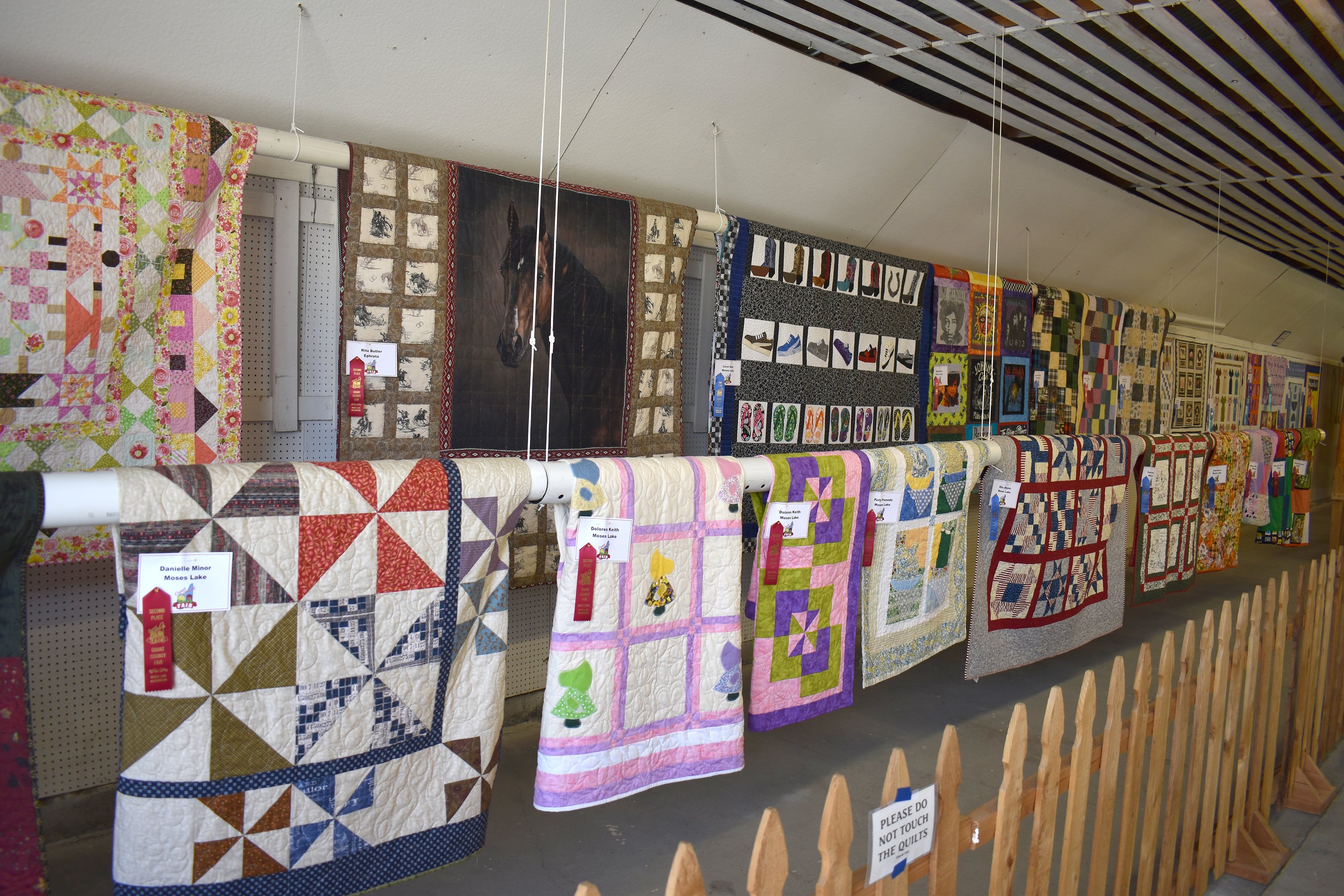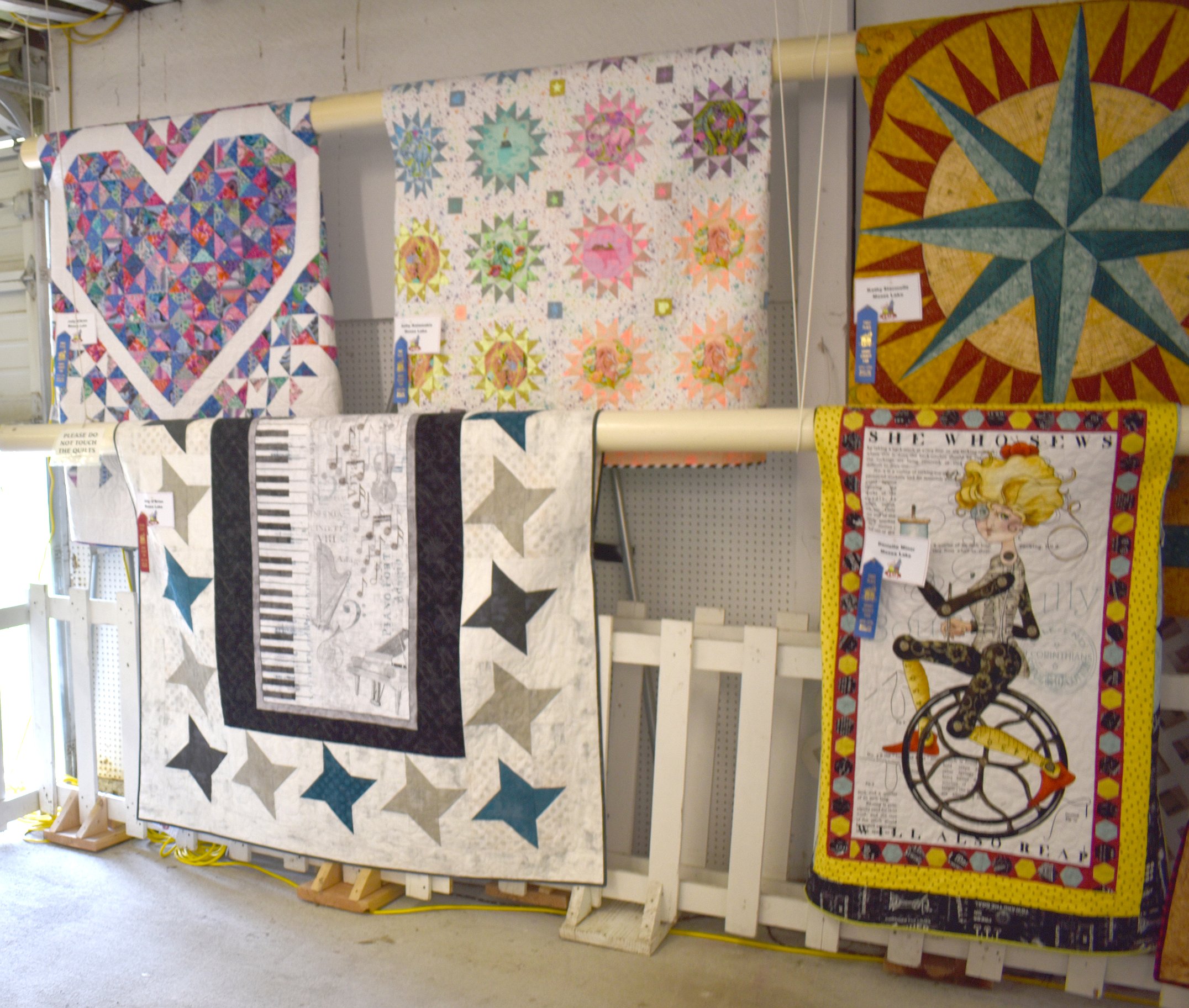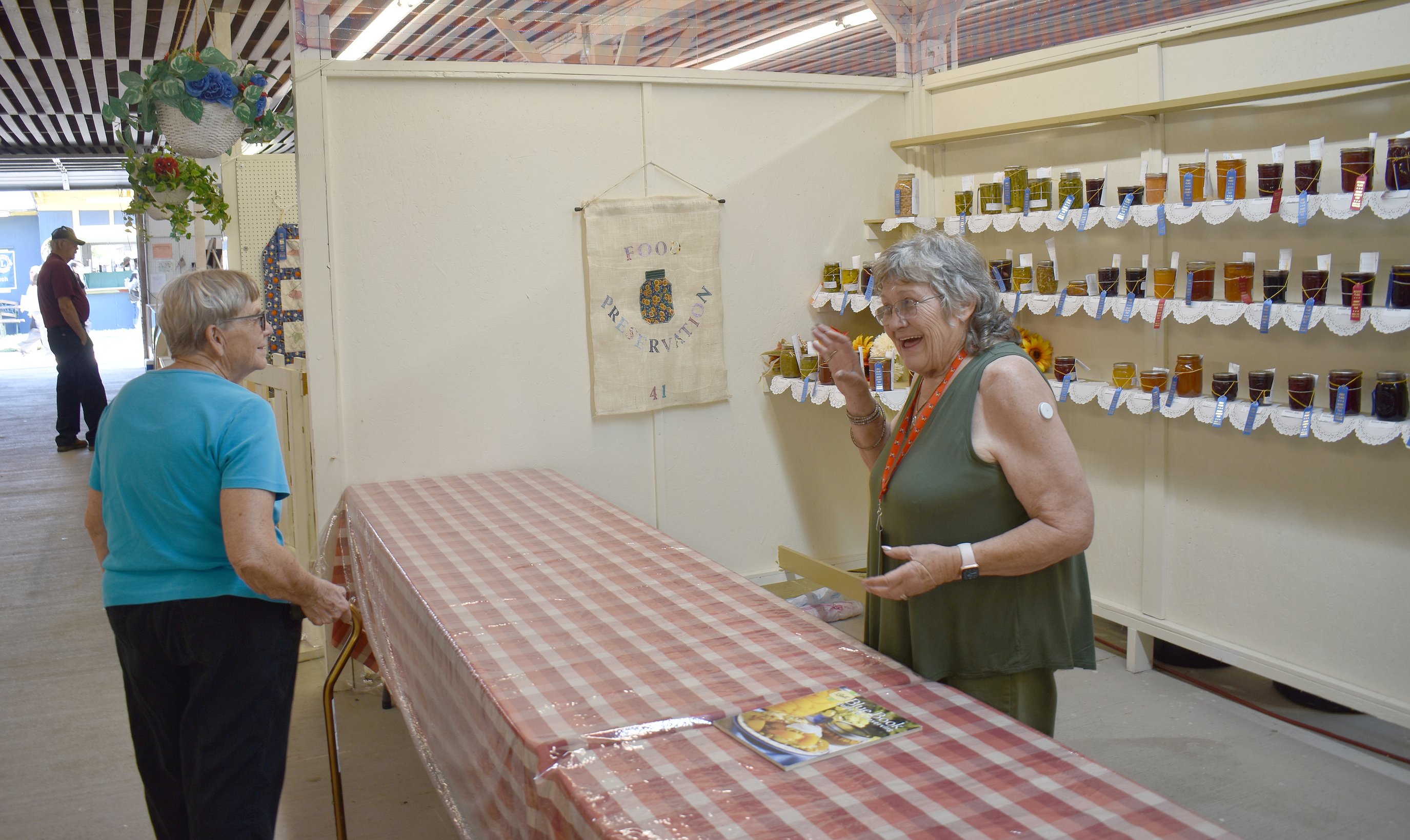Home Ec building at the fair a reminder of a bygone age
JOEL MARTIN | Hagadone News Network | UPDATED 1 year, 4 months AGO
Joel Martin has been with the Columbia Basin Herald for more than 25 years in a variety of roles and is the most-tenured employee in the building. Martin is a married father of eight and enjoys spending time with his children and his wife, Christina. He is passionate about the paper’s mission of informing the people of the Columbia Basin because he knows it is important to record the history of the communities the publication serves. | August 15, 2024 2:10 AM
MOSES LAKE — A traveler from a century ago would recognize the craftsmanship of the displays in the Home Economics Building at the Grant County Fair, possibly more readily than a modern observer.
“This whole thing is revisiting my childhood,” said Steve Hess of Soap Lake, who had a wooden loom set up and was demonstrating old-fashioned weaving techniques. He’d discovered a love for fabric when he was a boy, and his mother gave him a stack of rags to sew together to keep his hands busy, he said. “She turned me loose with a sewing machine, and said ‘You can go any speed you want if you’ll sew those rags for me.’ So I’d tear the rags apart, flannel and sew them together, and my great-aunt would weave rugs.”
Hess, now in his 70s, reconnected with that memory about 20 years ago at a folk fair in Spokane. There were all sorts of weavers and spinners there, he said, and they steered Hess to where he could buy an old loom. Since then, he’s rebuilt numerous decrepit looms, he said, and he had one from 1918, and another from the 1940s at the fair with him. He makes rugs out of a mixture of virgin material, which he buys by mail order, and old rags and discarded clothing.
“He uses shirts, jeans, blankets, all kinds of things,” said Diane Rapp, who was helping Hess with his display. “He has a little gadget that cuts it into strips, then he sews the strips together and rolls them into a ball of fabric that he then puts on the shuttle to make the rug.”
“All those balls of stuff up there,” she said, gesturing to a row of balls of miscellaneous cloth strips, “people have thrown it away. It probably had a big stain in the middle of it; you can cut around that and you can make stuff as good or not-so-good as you want.”
Not far away, Carol Getz was overseeing the exhibit of quilts. There were 67 quilts entered, Getz said, which was up from last year’s 60.
“These are from everywhere in Grant County,” Getz said, “everything from king-size quilts down to little, tiny wall hangings.”
The youth section covered a corner of the display, and the adult quilts took up a long wall of the building. Many but not all of them were made by members of the Basin Piecemakers Quilt Guild. The quilts are judged against other pieces of the same size, and judges look for quilts that are even and symmetrical and whose seams line up neatly, and if the color theory matches with the pattern, she said.
Some of the quilts were very intricate. There was one with a piano theme and other musical instruments and symbols in black and white, and another with what appeared to be a steampunk woman riding a unicycle made from an old sewing machine wheel. Yet another was made from the fronts of various concert T-shirts: Johnny Cash, Jimi Hendrix, the Rolling Stones and others.
“A lot of them, the person said they hadn’t gone to, so they just went online and got brand-new and used T-shirts and so they could fill the gaps where they didn’t have anything.”
Gayle Sullivan, overseeing the food preservation area, had full shelves of jars with various foodstuffs in them, but not as full as she would have liked, she said. Still, the youth participation was the largest she’d ever seen, she added.
Canning food is a precise thing, Sullivan said. Registrants have to list not only what the product is but when it was made, whether it was processed in a cold bath, a hot bath or a pressure cooker, and even the elevation at which it was canned. Much of Grant County is somewhere around 1,000 feet above sea level, and the elevation affects the cooking time.
“I had a couple of people get really angry with me this year because they forgot to put their elevation in,” Sullivan said. “All of these (instructions books) are at sea level. This (book) has the prep processing time; we want to cook it for 40 minutes in a quart jar, but we have to add to that time because of the elevation. One of our judges lives at 4,500 feet.”
The canned goods are judged on how much space is between the food and the lid, the color and consistency of the food and the uniformity of the cut, Sullivan said.
Sullivan’s granddaughter Farah Sullivan was there to help with the display, but she doesn’t do any canning herself, she said.
“Food canning is a lost art,” Gayle Sullivan said. “And I really believe that the times we’re living in, (people) are going to need it. They’re going to need to know how to raise their garden, raise their own food … It’s not that hard to do. It’s just having somebody willing to teach you how to do it.”
ARTICLES BY JOEL MARTIN

Wahluke Jr. High earns Culture Kick-Off Award again
MATTAWA — Wahluke Junior High School has been honored with the 2025 Culture Kickoff Award for the second year in a row, according to an announcement from the Association of Washington School Leaders and the Association of Washington School Principals.

Moses Lake firefighters meet the community with hot cocoa
MOSES LAKE — Moses Lake firefighters held their Christmas community event at ground level this year. “The last few years, we’ve done what we call the campus tour,” said MLFD Battalion Chief Schrade Rouse. “We would put our Santa on top of the truck and ride a neighborhood route so that people could come out and visit with us if they wanted to. But recently we were restricted by (state law) about letting Santa Claus ride on top to the truck. So now we’re trying a stationary (event).”

Women combine talents to open businesses in shared space
MOSES LAKE — Three woman-owned businesses held a ribbon-cutting and grand opening at their new location in Moses Lake Thursday. The office at 815 W. Third Ave. holds an accounting firm, a massage service and a waxing room. “We’re a one-stop shop,” Mandy Schuh said. Schuh is the owner and founder of both Pillar Rock Accounting and Seventh Sense Serenity massage service. As Pillar Rock, she and her assistant Esmeralda Sanchez handle after-the-fact bookkeeping: general bookkeeping, payroll processing and bank and credit card reconciliation. That’s the business people see when they walk in the front door. In a quiet, gently-lit room in the back of the office, Schuh massage services, including Swedish, intraoral massage, myofascial, reflexology and the Japanese technique called Reiki.







